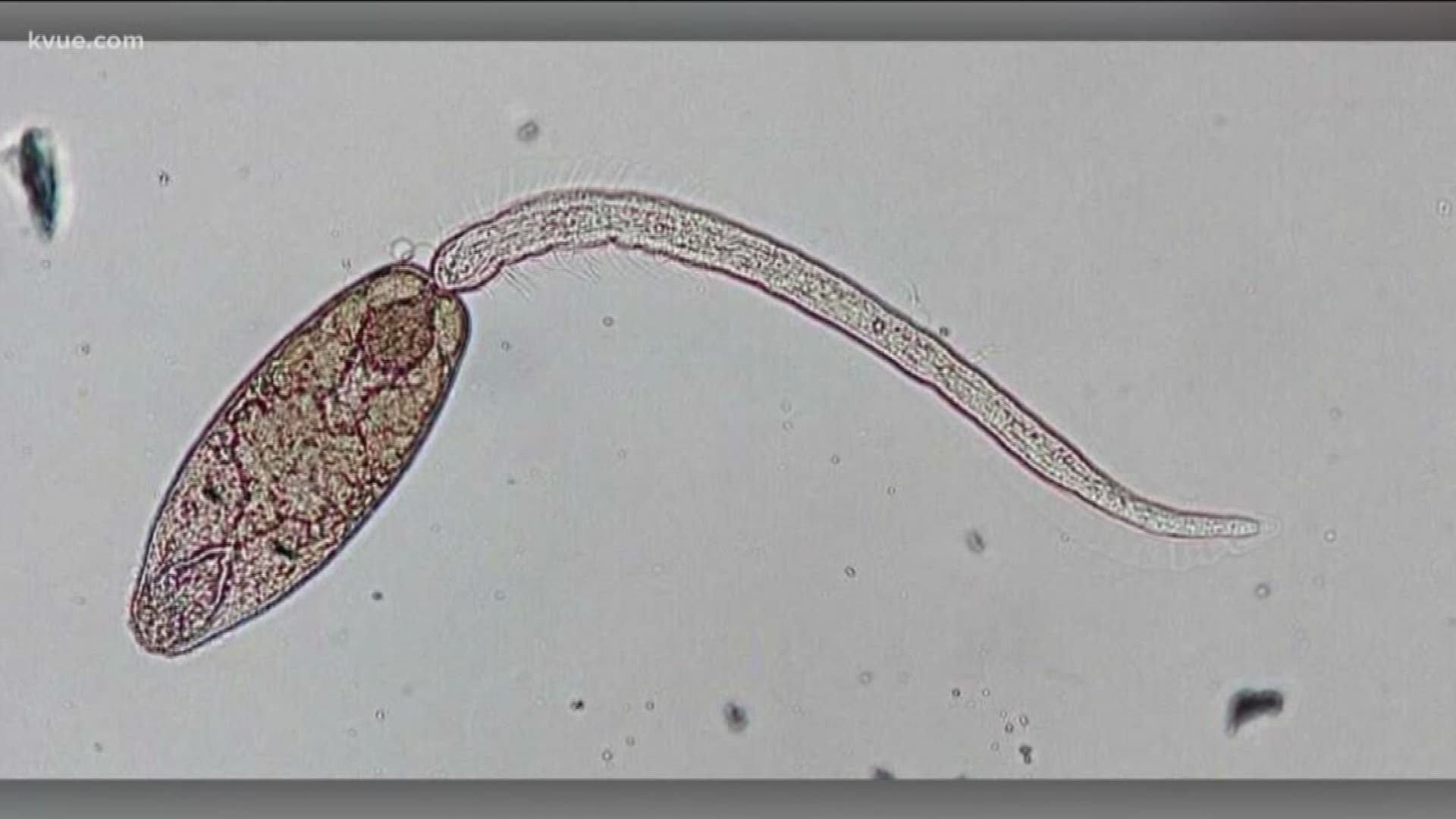SAN MARCOS, Calif. — Texas State University of researchers have identified an invasive parasite that is posing increasingly severe threats to the fish of the San Marcos and Comal Rivers, including endangered species unique to Texas springs.
The university said one parasite has been under research since 1996, but a biology student and parasitologist discovered a new parasite, Haplorchis pumilio, in 2013 that was infecting the endangered fountain darters as well.
"This newly arrived parasite infects the fins and jaw joints," said David Huffman, who is one of more than 40 scientists throughout the Texas State University System working through the Texas Invasive Invasive Species Institute in Huntsville to study and develop strategies to deal with invasive species across the state. "The larvae of H. pumilio penetrate the skin and migrate through intervening tissues to get to the fins and the jaw, leaving behind a trail of trauma and inflammation. This worm is now proving to be a much more serious threat to fountain darters than the other parasite, which receives most of the research attention."
“We’ve seen from experimental infections that the migrating larvae can rupture gall bladders, heart and other vital organs,” said Allison Scott, a graduate student working in the Huffman lab. "One fish I examined had a cyst behind its eye. You could see a large amount of blood in the eye. If soft tissue is in the path of a migrating larva, it just drills right through it. Larvae that do not seek out the fins often end up encysting in the jaw, which stiffens the joint and prevents the mouth from closing. This interferes with feeding, and forces the fish to swim continuously to breathe."
Scott is investigating the tissue pathology and stress indicators caused by H. pumilio in fish, as those that are not killed outright by the invasive species face a challenging future because most of the larvae encyst at the base of the tail.
RELATED:
"The fin rays of a fish's tail have evolved to be individually bendable like double-jointed fingers, and are controlled by a complex array of muscles that give the fish fine control of fins for efficient swimming," Huffman said. "It's amazing these larvae target that specific spot, because that is where most of the finesse of swimming is generated. This parasite dramatically reduces the ability of a fish to control its fins, and recent swim-test research in our lab indicates that infected fish lose their ability to pursue food and to escape predators on a mathematically predictable 'dose-response' basis."
In heavy experimental infections, researchers said the larvae have created pronounced blisters on the tail. In some instances, those blisters have burst and killed the fish.
"You don't see these blisters in nature, because affected fish are more susceptible to predation. Thus, when we’re sampling fish in the wild, we’re not sampling the whole range of parasite effects – we’re sampling only the survivors," Huffman said. "Unless researchers experimentally expose fish to documented levels of infection pressure or employ caged-fish studies, like we’re doing in our lab, they get a very limited picture of the range of impacts."
"Indeed," Scott said. "Uninfected fountain darters I set out in cages in areas of Landa Lake, where fountain darters occur, acquired infections so fast that one of them died in a few days, and all of them would have been dead after a month of exposure to the lake water."
Researchers said the source of the problem seems to have stemmed from an invasive snail, identified by a distinctive spiral shell, which was introduced into local springs in the mid 20th century. They were likely dumped from an aquarium by local residents.
This snail is known to transmit more parasitic fluke diseases than any other snail in the world. Two of these parasites, researchers said, now heavily infect most fish species in the San Marcos and Comal springs, including the fountain darter. In places like Laos and Vietnam, where fish are commonly eaten raw, both parasites have caused intestinal disease in humans.
"Fortunately, it is very unlikely that local humans are going to contract these parasites because they cook their fish," Huffman said. "On the other hand, if there are cats or dogs that are visiting fish cleaning stations, then it could become a veterinary problem. I've already warned one of the vets here to be on the lookout for it."
PEOPLE ARE ALSO READING:

